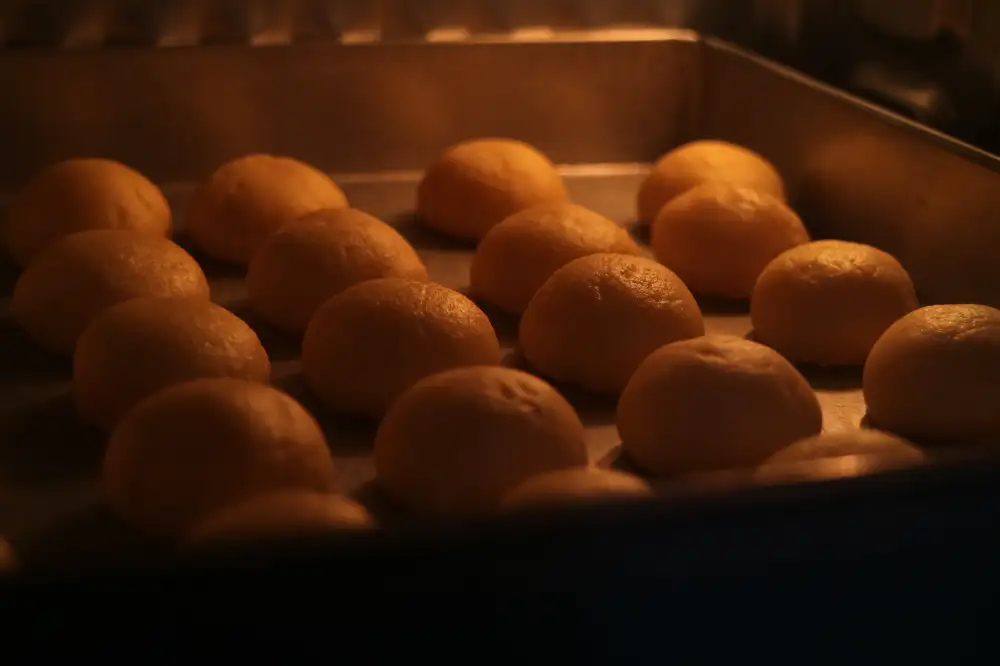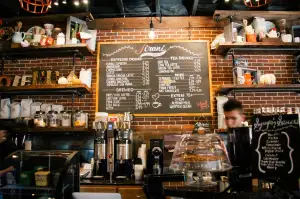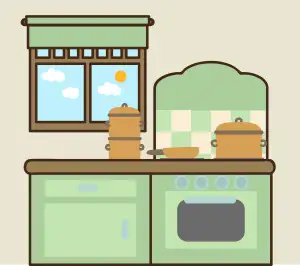Master the Art of Baking with a Convection Oven: Elevate Your Home Cooking Experience!

Convection ovens have become increasingly popular in home kitchens, revolutionizing the way we bake and cook. These ovens utilize a fan and exhaust system to circulate hot air evenly around the food, resulting in faster and more even cooking. Whether you're a seasoned baker or a novice cook, mastering the art of baking with a convection oven can elevate your home cooking experience to new heights. In this article, we will explore how convection ovens work, their benefits, tips for effective use, differences from conventional ovens, popular dishes to cook, maintenance and cleaning, as well as their energy efficiency. Discover why a convection oven is a great addition to any kitchen!
How convection ovens work
How convection ovens work: Convection ovens are designed to circulate hot air evenly throughout the cooking chamber. They achieve this through the use of a fan and exhaust system. The fan blows hot air onto the food, creating a consistent temperature and reducing cooking time. The exhaust system then removes any excess moisture, resulting in crispier and more evenly cooked dishes. This circulating air also helps to eliminate hot spots, ensuring that every part of the oven is at the same temperature. Overall, convection ovens provide faster and more efficient cooking by utilizing this airflow technology.
Benefits of using a convection oven
1. Faster cooking time: Convection ovens use a fan to circulate hot air, resulting in faster and more even cooking. This can reduce cooking time by up to 25%, making it ideal for busy individuals or those who want to save time in the kitchen.
2. Even baking: The circulating hot air in a convection oven ensures that heat reaches all sides of the food evenly. This helps to eliminate hot spots and ensures consistent browning and baking, resulting in perfectly cooked dishes every time.
3. Crispy texture: The fan in a convection oven helps to remove moisture from the surface of food, resulting in a crispy and golden-brown exterior. Whether you're roasting vegetables or baking pastries, a convection oven can help achieve that desired crunch.
4. Energy efficiency: Convection ovens are more energy-efficient compared to conventional ovens because they cook food faster at lower temperatures. This means less time spent preheating and less energy consumed overall, which can lead to cost savings on your electricity bill.
5. Versatility: Convection ovens offer versatile cooking options, allowing you to bake, roast, broil, and even dehydrate food. With adjustable temperature settings and multiple racks, you can cook multiple dishes simultaneously without flavors transferring between them.
6. Reduced need for rotating food: Unlike conventional ovens where you may need to rotate trays halfway through cooking, convection ovens ensure even heat distribution without the need for manual intervention. This saves time and effort during the cooking process.
Overall, using a convection oven can enhance your home cooking experience by providing faster cooking times, even baking results, energy efficiency, versatility, and convenience. It's a valuable addition to any kitchen for those looking to elevate their culinary skills.
Tips for using a convection oven effectively
1. Adjust cooking time and temperature: Convection ovens cook food faster than conventional ovens, so reduce the cooking time by about 25% and lower the temperature by 25 degrees Fahrenheit (or 15 degrees Celsius). This ensures even cooking without overcooking.
2. Use shallow and flat pans: Convection ovens work best with shallow and flat pans as they allow for better air circulation. Avoid using deep pans or those with high sides, as they can block the airflow and result in uneven cooking.
3. Rotate the pans: To ensure even browning, rotate the baking sheets halfway through the cooking process. This helps to distribute heat evenly and prevents any hot spots in the oven.
4. Avoid overcrowding: Leave enough space between food items on the baking sheet to allow hot air to circulate freely. Overcrowding can hinder proper airflow, leading to inconsistent results.
5. Use low-sided or rimless baking sheets: Opt for low-sided or rimless baking sheets when possible, as they allow hot air to reach all sides of the food item, resulting in more even browning.
6. Reduce recipe cooking times: When using recipes designed for conventional ovens, it's advisable to reduce the recommended cooking time by approximately 25%. Keep an eye on your dish towards the end of the suggested cooking time to prevent overcooking.
7. Check for doneness earlier: Since convection ovens cook faster, start checking for doneness a few minutes before the recommended time in recipes. This prevents overcooking and ensures perfectly cooked dishes.
By following these tips, you can make the most out of your convection oven and achieve excellent results with your baked goods and other dishes.
Differences between convection ovens and conventional ovens
1. Cooking Method: The main difference lies in the cooking method. Conventional ovens use radiant heat from the top and bottom heating elements to cook food, resulting in uneven heat distribution. On the other hand, convection ovens have a fan that circulates hot air throughout the oven, ensuring even cooking and browning.
2. Cooking Time: Due to the circulating hot air, convection ovens cook food faster than conventional ovens. This can be a significant time-saver when you're in a hurry or have multiple dishes to prepare.
3. Temperature Adjustment: In a conventional oven, you may need to adjust the temperature or cooking time for recipes designed for convection ovens. Convection ovens generally require lower temperatures and shorter cooking times due to their efficient heat distribution.
4. Browning and Crisping: Convection ovens excel at browning and crisping food due to the even airflow. This is particularly beneficial for roasting meats, baking pastries, or achieving a golden crust on casseroles.
5. Multiple Rack Cooking: Convection ovens allow you to cook multiple dishes simultaneously without flavor transfer since the hot air circulates evenly around each dish. In contrast, conventional ovens may result in unevenly cooked dishes when using multiple racks.
6. Adaptability: While most recipes can be adapted for convection cooking, some delicate baked goods like soufflés or custards may not fare as well in a convection oven due to the strong airflow potentially causing them to deflate.
Understanding these differences will help you make an informed decision about which type of oven best suits your culinary needs and preferences.
Popular dishes to cook in a convection oven
Popular dishes to cook in a convection oven include roasted meats, such as chicken, turkey, and beef. The convection setting helps to evenly cook the meat, resulting in a crispy and golden exterior while keeping the inside juicy and tender. Baked goods also benefit from the convection feature, with cookies and pastries turning out perfectly browned and evenly cooked. Pizza lovers will appreciate the ability of a convection oven to create a crispy crust while melting the cheese just right. Vegetables can be roasted to perfection in a convection oven, bringing out their natural flavors and caramelizing their edges. Overall, the versatility of a convection oven allows for endless possibilities when it comes to cooking delicious meals at home.
Maintenance and cleaning of convection ovens
Maintenance and cleaning of convection ovens is essential to ensure their longevity and optimal performance. Regular maintenance can help prevent any build-up of grease, food particles, and residue that may affect the oven's efficiency.
To clean a convection oven, start by unplugging it and allowing it to cool down completely. Remove any removable parts such as racks and trays and wash them with warm soapy water. For the interior, use a non-abrasive cleaner or a mixture of baking soda and water to scrub away any stubborn stains.
Avoid using harsh chemicals or abrasive materials that could damage the oven's surface. Instead, opt for gentle cleaning solutions and soft cloths or sponges. Pay extra attention to the fan blades and vents as they can accumulate dust over time.
It is also important to regularly check the door seal for any signs of wear or damage. A faulty seal can lead to heat loss and affect the oven's performance. If necessary, replace the seal following the manufacturer's instructions.
In addition to regular cleaning, it is recommended to schedule professional maintenance at least once a year. A technician can inspect the internal components, ensure proper functioning, and address any potential issues before they become major problems.
By following these maintenance practices, you can keep your convection oven in top condition, ensuring efficient cooking results and prolonging its lifespan for years to come.
Energy efficiency of convection ovens
Energy efficiency is a key advantage of convection ovens. These appliances are designed to distribute heat evenly, resulting in faster and more efficient cooking. By using a fan to circulate hot air throughout the oven, convection ovens can cook food up to 25% faster than conventional ovens. This means that you can save both time and energy when using a convection oven.
Additionally, because convection ovens cook food more quickly, they also require less energy overall. This can lead to significant energy savings over time, especially for those who frequently use their ovens for cooking or baking.
Furthermore, the even heat distribution provided by convection ovens allows for lower cooking temperatures. As a result, you may be able to reduce the temperature setting by about 25 degrees Fahrenheit compared to a conventional oven. This not only saves energy but also helps prevent overcooking and drying out of your dishes.
It's worth noting that while convection ovens are generally more energy-efficient than conventional ovens, the exact energy savings will depend on factors such as the model and usage patterns. However, it is safe to say that investing in a convection oven can contribute to reducing your carbon footprint and lowering your energy bills in the long run.
In conclusion, investing in a convection oven is a wise choice for any home cook looking to elevate their baking game. The unique technology behind convection ovens ensures even heat distribution, resulting in perfectly cooked and evenly browned dishes. With faster cooking times and the ability to bake multiple trays at once, convection ovens save both time and energy. They also offer versatility, allowing you to experiment with various recipes and techniques.
Furthermore, convection ovens provide numerous benefits such as reduced cooking time, improved texture, and enhanced flavors. Whether you're baking breads, pastries, or roasting meats and vegetables, the consistent heat circulation ensures excellent results every time.
Maintenance is relatively simple with regular cleaning and occasional servicing. Additionally, convection ovens are energy-efficient compared to conventional ovens due to their shorter cooking times.
In summary, a convection oven is an invaluable tool that can take your baking skills to the next level. Its efficient performance, versatility, and ability to produce consistently delicious results make it a must-have appliance for any passionate home cook. So why wait? Upgrade your kitchen with a convection oven today and experience the joy of mastering the art of baking like never before!
Published: 13. 02. 2024
Category: Home



